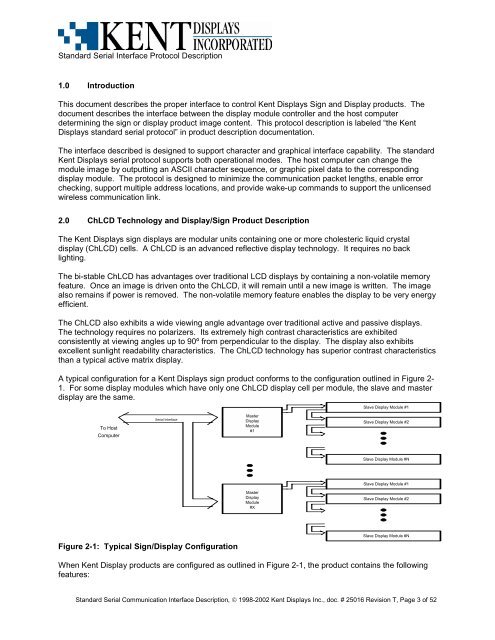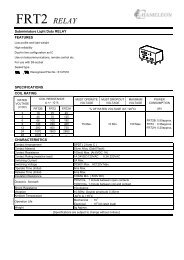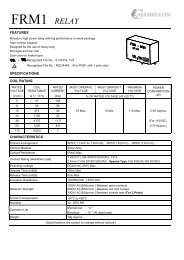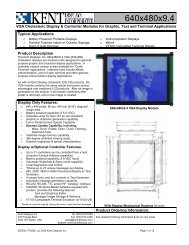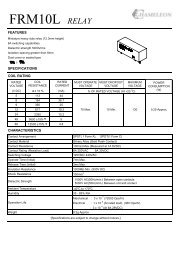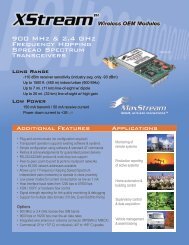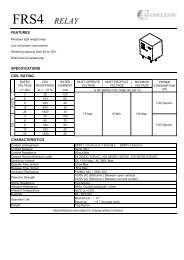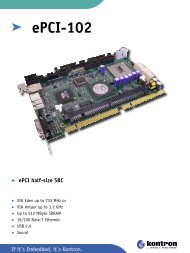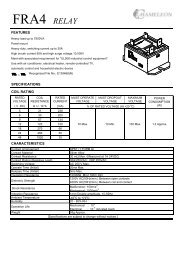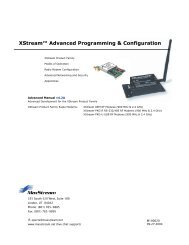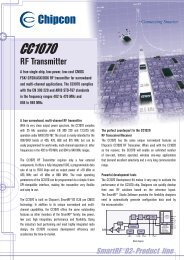STANDARD SERIAL COMMUNICATION INTERFACE and ...
STANDARD SERIAL COMMUNICATION INTERFACE and ...
STANDARD SERIAL COMMUNICATION INTERFACE and ...
You also want an ePaper? Increase the reach of your titles
YUMPU automatically turns print PDFs into web optimized ePapers that Google loves.
St<strong>and</strong>ard Serial Interface Protocol Description<br />
1.0 Introduction<br />
This document describes the proper interface to control Kent Displays Sign <strong>and</strong> Display products. The<br />
document describes the interface between the display module controller <strong>and</strong> the host computer<br />
determining the sign or display product image content. This protocol description is labeled “the Kent<br />
Displays st<strong>and</strong>ard serial protocol” in product description documentation.<br />
The interface described is designed to support character <strong>and</strong> graphical interface capability. The st<strong>and</strong>ard<br />
Kent Displays serial protocol supports both operational modes. The host computer can change the<br />
module image by outputting an ASCII character sequence, or graphic pixel data to the corresponding<br />
display module. The protocol is designed to minimize the communication packet lengths, enable error<br />
checking, support multiple address locations, <strong>and</strong> provide wake-up comm<strong>and</strong>s to support the unlicensed<br />
wireless communication link.<br />
2.0 ChLCD Technology <strong>and</strong> Display/Sign Product Description<br />
The Kent Displays sign displays are modular units containing one or more cholesteric liquid crystal<br />
display (ChLCD) cells. A ChLCD is an advanced reflective display technology. It requires no back<br />
lighting.<br />
The bi-stable ChLCD has advantages over traditional LCD displays by containing a non-volatile memory<br />
feature. Once an image is driven onto the ChLCD, it will remain until a new image is written. The image<br />
also remains if power is removed. The non-volatile memory feature enables the display to be very energy<br />
efficient.<br />
The ChLCD also exhibits a wide viewing angle advantage over traditional active <strong>and</strong> passive displays.<br />
The technology requires no polarizers. Its extremely high contrast characteristics are exhibited<br />
consistently at viewing angles up to 90º from perpendicular to the display. The display also exhibits<br />
excellent sunlight readability characteristics. The ChLCD technology has superior contrast characteristics<br />
than a typical active matrix display.<br />
A typical configuration for a Kent Displays sign product conforms to the configuration outlined in Figure 2-<br />
1. For some display modules which have only one ChLCD display cell per module, the slave <strong>and</strong> master<br />
display are the same.<br />
Slave Display Module #1<br />
To Host<br />
Computer<br />
Serial Interface<br />
Master<br />
Display<br />
Module<br />
#1<br />
Slave Display Module #2<br />
Slave Display Module #N<br />
Slave Display Module #1<br />
Master<br />
Display<br />
Module<br />
#X<br />
Slave Display Module #2<br />
Figure 2-1: Typical Sign/Display Configuration<br />
Slave Display Module #N<br />
When Kent Display products are configured as outlined in Figure 2-1, the product contains the following<br />
features:<br />
St<strong>and</strong>ard Serial Communication Interface Description, © 1998-2002 Kent Displays Inc., doc. # 25016 Revision T, Page 3 of 52


